DTA Healthcare Solutions isn’t just about patient experience strategy and planning, service culture training, and coaching. A significant aspect of our company addresses the acquisition, management, and use of data in healthcare to improve patient experience, clinical outcomes, and operational efficiency. Having this data warehousing and analytics practice means we are regularly exposed to the healthcare IT (HIT) industry through articles, conferences, etc., and as such we are acutely aware of the hot topics and trends in HIT. Patient Engagement is certainly one of those hot topics.
As we talk about Patient Experience, especially with our HIT counterparts, we find that many use the terms “Patient Experience” and “Patient Engagement” interchangeably. However, they are not the same thing. They are connected, but they are not interchangeable terms that address the same concepts. I think because of the sheer amount of advertising related to Patient Engagement offerings, and the fact that they both start with “patient” and the second word starts with the letter E, you see a ton of confusion out there between the two concepts.
The Beryl Institute defines Patient Experience as “the sum of all interactions, shaped by an organization’s culture, that influence patient perceptions across the continuum of care”. “Patient Engagement” as it is expressed and seen in the marketplace today focuses almost exclusively on technology such as patient portals and mobile apps to connect with patients outside of the healthcare setting to better engage them in understanding and improving their own health.
The other day I needed to get to a shovel from my garage, and in doing so I had to move a bunch of stuff out of the way, including an extension ladder. It occurred to me that an extension ladder is a great analogy to help understand how Patient Experience and Patient Engagement are related. Patient Experience is the bottom of the two connected ladders. It provides a stable base from which the second ladder, Patient Engagement, can be extended. For patients, it’s only when they feel like they’ve been treated with courtesy and respect, and that they’ve been listened to carefully, that then they’re able to truly hear what their providers are saying. And when they do hear, it’s important that their providers are explaining things in a way they can understand. Those three elements – courtesy and respect, listening carefully, and explaining things – are all part of traditional communication and patient experience. It’s only when those key elements are consistently achieved across patient and caregiver interactions that we’re able to meaningfully engage patients in their own care.
Now we know that the bricks and mortar healthcare system, the hospitals and clinics where patients meet in person with their providers, are just one small piece of the puzzle for patients. The reality is that something like 40% of the overall determinants of health are within a patient’s control, and they don’t even intersect directly with a hospital or clinic. Things like medication adherence and lifestyle choices have just as big of an impact on outcomes, if not more, as the care that is received in a hospital or clinic setting. That’s where Patient Engagement approaches and technology come in.
I firmly believe that when we can sufficiently raise the experiences of our patients, then patients will be more open to our encouragement to get them more engaged and activated in taking control of their health. The combination of Patient Experience and Patient Engagement will then lead to better outcomes (a taller ladder). But it really starts with Patient Experience success, and Patient Engagement builds off that success to the benefit of the patient.
As I mentioned last time, I recently had the opportunity to sit down with Lonnie Hirsch of Hirsch Healthcare Consulting to discuss current themes, challenges, and trends in patient experience. We covered a bit about this topic of patient experience vs. patient engagement but we also touched on topics such as misconceptions about patient experience, where to start and how to be successful in improving patient experience, and more! If you’d like to hear more of this “live” click the link to listen to the podcast. I hope it’s helpful to you!
https://hirschhealthconsulting.com/patient-experience-podcast/
